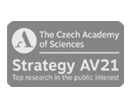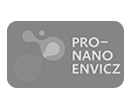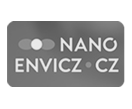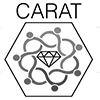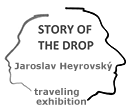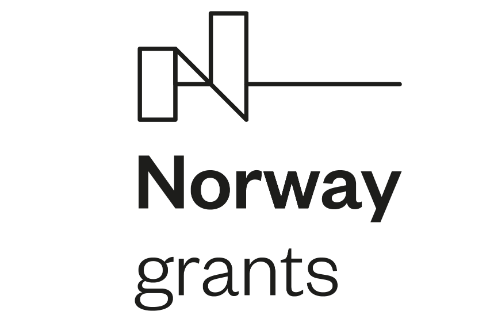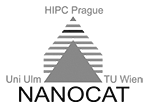Projekt CARAT
Název projektu: CARAT
Uhlíkové alotropy s racionalizovanými nanorozhraními a nanospoji pro environmentální a biomedicínské aplikace
Poskytovatel dotace: Ministerstvo školství, mládeže a tělovýchovy jako Řídicí orgán Operačního programu Výzkum, vývoj a vzdělávání
Dotace byla poskytnuta na základě žádosti o podporu přijaté dne 13.11. 2017 v rámci Výzvy č. 02_16_026 Dlouhodobá mezisektorová spolupráce, v aktuálním znění (dále jen Výzva)
Oblast podpory: Dlouhodobá mezisektorová spolupráce
Hlavní řešitel projektu: RNDr. Ing. Martin KALBÁČ, Ph. D.
Registrační číslo projektu: CZ.02.1.01/0.0/0.0/16_026/0008382
Celkové náklady projektu: 90 685 819,01 Kč
Míra spolufinancování z Evropského sociálního fondu: Míra spolufinancování z Evropského fondu pro regionální rozvoj (dále jen „EFRR“) 75,9%
Akronym: CARAT
Doba realizace: 1. 10. 2018 - 31. 12. 2022 (51 měsíců)
Anotace projektu
Hlavním cílem projektu je navázání a realizace intenzivní dlouhodobé spolupráce mezi partnery z akademické a komerční sféry za účelem špičkového výzkumu s významným dopadem na oblasti determinujících kvalitu lidského života: ukládání energie, životní prostředí a lidské zdraví. Navržená výzkumná strategie cílí na racionalizaci komunikačních kanálů (rozhraní a nanospojů) v hybridních a senzorických strukturách na bázi optimalizovaných uhlíkových alotropů pro enviro a bio aplikace.
Hlavním cílem projektu je navázání intenzivní dlouhodobé spolupráce v akademické a komerční sféře za účelem špičkového výzkumu s významným dopadem na oblasti determinující kvalitu lidského života: ukládání energie, životní prostředí a lidské zdraví. Toto synergické spojení je motivováno několika zásadními vědeckými otázkami v oblasti implementace uhlíkových nanomateriálů do konkrétních aplikací. Zároveň je cílem vytvořit dostatečně různorodý expertní tým, který bude schopen efektivně komunikovat na hluboce odborné úrovni, a tak povyšovat stávající technologické a kreativní postupy v oblasti vědeckého zájmu projektu. Výzkumná strategie projektu staví na neotřelém přístupu k materiálovému designu, a to skrz racionalizaci komunikačních kanálů - rozhraní a nanospojů. Jako vysoce žádané dílčí materiály jsou zvoleny uhlíkové alotropy, konkrétně grafen (a odvozené grafenoidy) a nanokrystalický diamant. Dílčími vědeckými cíli v grafenové větvi jsou dosažení optimalizace strukturních a topografických parametrů nativního a funkcionalizovaného grafenu, interakce grafenu a substrátu (kov, dielektrikum, polovodič), a litografických procesů pro šetrné strukturování. Ultimátním cílem je pak realizace robustních senzorů a tištěných elektronických funkčních struktur na platformě modifikovaných a strukturovaných grafenoidů pro detekci a kvantifikaci environmentálních parametrů. V diamantové větvi je cíleno na optimalizaci přípravy detonačního diamantu s definovanými parametry, které slouží jako předstupeň realizace in vitro a in vivo senzorů s extrémním časoprostorovým rozlišením a vnitrobuněčných nanosenzorů na bázi spinových entit. Dále je očekáváno významné povýšení parametrů hybridních homokompozitů na bázi selektivně propojených sp2 a sp3 forem nanouhlíku. Dlouhodobým cílem je udržení nastavené spolupráce a definice nových výzkumných aktivit zejména v linii detonačních procesů a litografických technologií nad rámec skupiny materiálů, které jsou předmětem výzkumu v projektu.
Partneři:
TESLA BLATNÁ, a.s.
OZM Research s.r.o.
ZČU
MFF UK
UOCHB
FZÚ
Tento projekt je spolufinancován EU.
Publikace:
- Extremely rapid isotropic irradiation of nanoparticles with ions generated in situ by a nuclear reaction - PubMed (nih.gov)
- Introducing Well-Defined Nanowrinkles in CVD Grown Graphene - PubMed (nih.gov)
- Sculpturing graphene wrinkle patterns into compliant substrates - ScienceDirect
- Not All Fluorescent Nanodiamonds Are Created Equal: A Comparative Study - Reineck - 2019 - Particle & Particle Systems Characterization - Wiley Online Library
- Inhibitor–Polymer Conjugates as a Versatile Tool for Detection and Visualization of Cancer-Associated Carbonic Anhydrase Isoforms (acs.org)
- Superlattice in collapsed graphene wrinkles | Scientific Reports (nature.com)
- Strong and efficient doping of monolayer MoS 2 by a graphene electrode - PubMed (nih.gov)
- On the Suitability of Raman Spectroscopy to Monitor the Degree of Graphene Functionalization by Diazonium Salts | The Journal of Physical Chemistry C (acs.org)
- Decomposition of Iron Pentacarbonyl Induced by Singly and Multiply Charged Ions and Implications for Focused Ion Beam-Induced Deposition (acs.org)
- Effect of thermal history on magnetism in UCoGa - ScienceDirect
- Diamond nano-optode for fluorescent measurements of pH and temperature - Nanoscale (RSC Publishing)
- Transferless Inverted Graphene/Silicon Heterostructures Prepared by Plasma-Enhanced Chemical Vapor Deposition of Amorphous Silicon on CVD Graphene - PubMed (nih.gov)
- UV/VIS spectroelectrochemistry with 3D printed electrodes - ScienceDirect
- 3D printed polylactic acid/carbon black electrodes with nearly ideal electrochemical behaviour - ScienceDirect
- The Effect of the Orientation Towards Analyte Flow on Electrochemical Sensor Performance and Current Fluctuations - CORE
- Nanomaterials | Free Full-Text | Understanding Magnetization Dynamics of a Magnetic Nanoparticle with a Disordered Shell Using Micromagnetic Simulations (mdpi.com)
- Large scale chemical functionalization of locally curved graphene with nanometer resolution - ScienceDirect
- Simultaneous label-free live imaging of cell nucleus and luminescent nanodiamonds - PubMed (nih.gov)
- Nanoscale Dynamic Readout of a Chemical Redox Process Using Radicals Coupled with Nitrogen-Vacancy Centers in Nanodiamonds | ACS Nano
- Nanomaterials | Free Full-Text | Recent Advances of Graphene-Derived Nanocomposites in Water-Based Drilling Fluids (mdpi.com)
- Hierarchy of nanoscale graphene wrinkles on compliant substrate: Theory and experiment - ScienceDirect
- Carbon | Vol 173, Pages 1-1114 (March 2021) | ScienceDirect.com by Elsevier
- Attoliter Chemistry for Nanoscale Functionalization of Graphene | ACS Applied Materials & Interfaces
- IJMS | Free Full-Text | 5-Nitro-2,4-Dichloropyrimidine as an Universal Model for Low-Energy Electron Processes Relevant for Radiosensitization (mdpi.com)
- Growth defects in WC:H layers for tribological applications - ScienceDirect
- In-depth distribution of elements and chemical bonds in the surface region of calcium-doped diamond-like carbon films - ScienceDirect
- Host–Guest Interactions in Metal–Organic Frameworks Doped with Acceptor Molecules as Revealed by Resonance Raman Spectroscopy | The Journal of Physical Chemistry C (acs.org)
- Nanomaterials | Free Full-Text | In Situ Raman Microdroplet Spectroelectrochemical Investigation of CuSCN Electrodeposited on Different Substrates (mdpi.com)
- Strong localization effects in the photoluminescence of transition metal dichalcogenide heterobilayers - IOPscience
- Chemical vapor deposition (CVD) growth of graphene films - ScienceDirect
- Folding DNA into origami nanostructures enhances resistance to ionizing radiation - Nanoscale (RSC Publishing)
- Water-Assisted Electron-Induced Chemistry of the Nanofabrication Precursor Iron Pentacarbonyl | The Journal of Physical Chemistry A (acs.org)
- Harnessing subcellular-resolved organ distribution of cationic copolymer-functionalized fluorescent nanodiamonds for optimal delivery of active siRNA to a xenografted tumor in mice - Nanoscale (RSC Publishing)
- Nanomaterials | Free Full-Text | On the Origin of Reduced Cytotoxicity of Germanium-Doped Diamond-Like Carbon: Role of Top Surface Composition and Bonding (mdpi.com)
- Nanoscale Study of the Hole-Selective Passivating Contacts with High Thermal Budget Using C-AFM Tomography | ACS Applied Materials & Interfaces
- IJMS | Free Full-Text | Reversible Lectin Binding to Glycan-Functionalized Graphene (mdpi.com)
- The use of sample positioning to control defect creation by oxygen plasma in isotopically labelled bilayer graphene membranes - RSC Advances (RSC Publishing) DOI:10.1039/D1RA01249E
- Crystallization of 2D Hybrid Organic–Inorganic Perovskites Templated by Conductive Substrates - Kovaricek - 2021 - Advanced Functional Materials - Wiley Online Library
- Carbon | Vol 179, Pages 1-704 (July 2021) | ScienceDirect.com by Elsevier
- Probing the local dielectric function of WS<SUB>2</SUB> on an Au substrate by near field optical microscopy operating in the visible spectral range - NASA/ADS (harvard.edu)
- Two-Dimensional CVD-Graphene/Polyaniline Supercapacitors: Synthesis Strategy and Electrochemical Operation | ACS Applied Materials & Interfaces
- Quantum Sensing of Free Radicals in Primary Human Dendritic Cells | Nano Letters (acs.org)
- Nanomaterials | Free Full-Text | Mixed sp2–sp3 Nanocarbon Materials: A Status Quo Review (mdpi.com)
- Towards recent tendencies in drilling fluids: application of carbon-based nanomaterials - ScienceDirect
- Nanomaterials | Free Full-Text | Self-Limitations of Heat Release in Coupled Core-Shell Spinel Ferrite Nanoparticles: Frequency, Time, and Temperature Dependencies (mdpi.com)
- Doping of the hydrogen-passivated Si(100) electronic structure through carborane adsorption studied using density functional theory - Physical Chemistry Chemical Physics (RSC Publishing
- Energies | Free Full-Text | Influence of Sweat on Joint and Sensor Reliability of E-Textiles (mdpi.com)
- Energies | Free Full-Text | Simultaneous Detection of NH3 and NO2 by Modified Impedance Spectroscopy in Sensors Based on Carbon Nanotubes (mdpi.com)
- Highly Sensitive Room-Temperature Ammonia Sensors Based on Single-Wall Carbon Nanotubes Modified by PEDOT | IEEE Journals & Magazine | IEEE Xplore
- Dielectric, structural and mechanical properties of thermally aged biaxially oriented polymeric substrates for flexible electronics - ScienceDirect
- Nanomaterials | Free Full-Text | Graphene-Based Temperature Sensors–Comparison of the Temperature and Humidity Dependences (mdpi.com)
- Metastable Brominated Nanodiamond Surface Enables Room Temperature and Catalysis-Free Amine Chemistry | The Journal of Physical Chemistry Letters (acs.org)
- Optically coupled gold nanostructures: plasmon enhanced luminescence from gold nanorod-nanocluster hybrids - Nanoscale (RSC Publishing) DOI:10.1039/D1NR08254J
- Visualization of Sentinel Lymph Nodes with Mannosylated Fluorescent Nanodiamonds - Kvakova - 2022 - Advanced Functional Materials - Wiley Online Library
- Reversible anion intercalation into graphite from aluminum perchlorate “water‐in‐salt” electrolyte - ScienceDirect
- Chaotropic anion based “water-in-salt” electrolyte realizes a high voltage Zn–graphite dual-ion battery - Journal of Materials Chemistry A (RSC Publishing) DOI:10.1039/D1TA10122F
- Localized Spectroelectrochemical Identification of Basal Plane and Defect-Related Charge-Transfer Processes in Graphene | The Journal of Physical Chemistry Letters (acs.org)
- Different Mechanisms of DNA Radiosensitization by 8-Bromoadenosine and 2′-Deoxy-2′-fluorocytidine Observed on DNA Origami Nanoframe Supports | The Journal of Physical Chemistry Letters (acs.org)
- Nanodiamond Size from Low-Frequency Acoustic Raman Modes | The Journal of Physical Chemistry C (acs.org)
- Anomalous elasticity and damping in covalently cross-linked graphene aerogels | Communications Physics (nature.com)
- Polymers | Free Full-Text | Solvent Evaporation Rate as a Tool for Tuning the Performance of a Solid Polymer Electrolyte Gas Sensor (mdpi.com)








